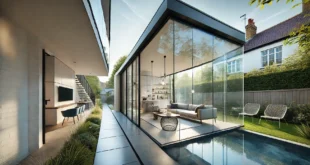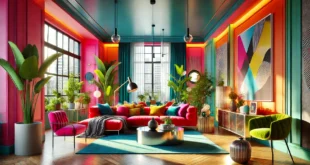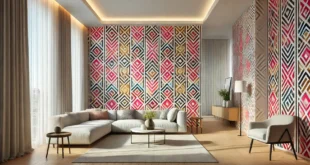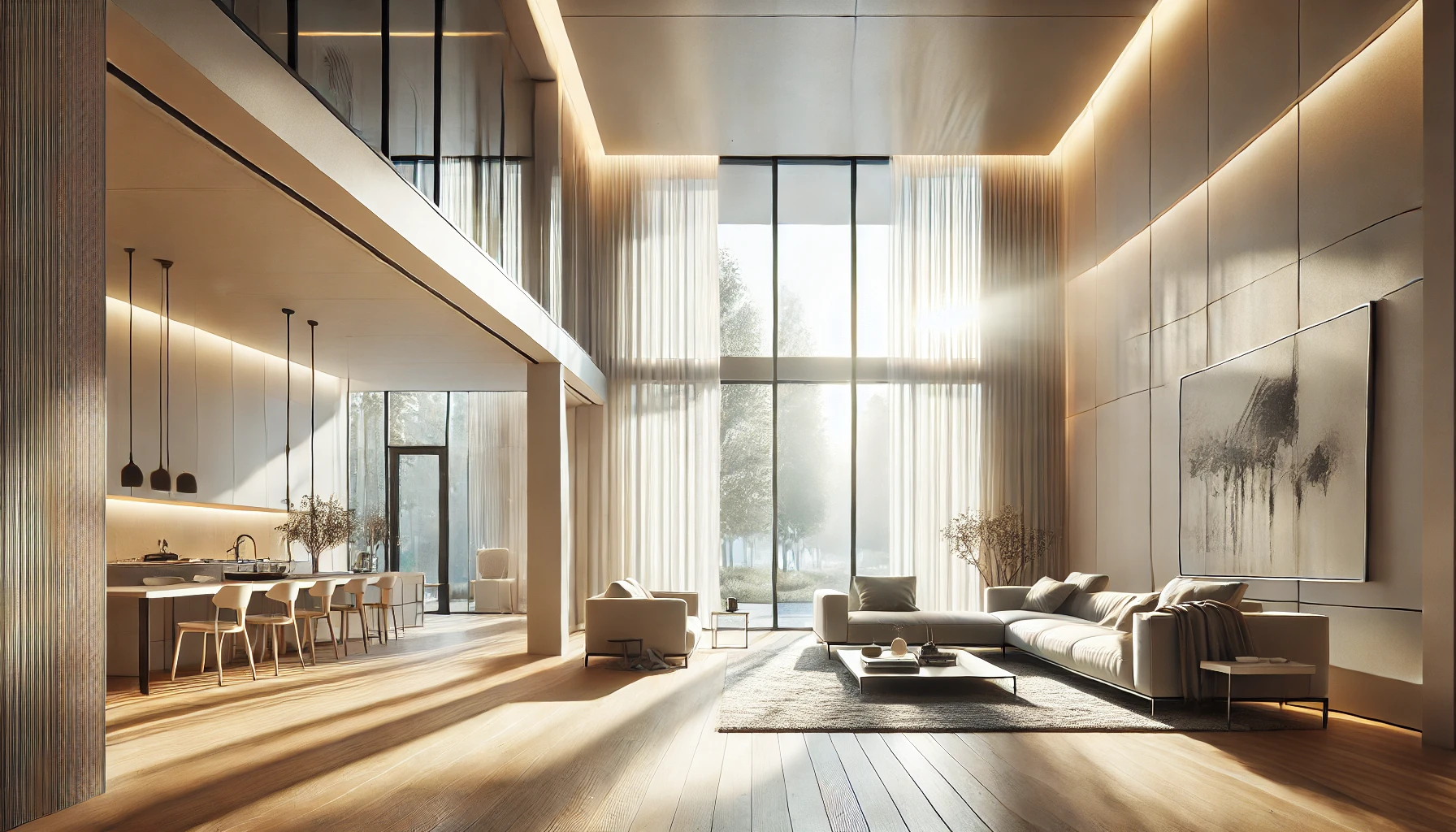
Welcome to a world where light transforms your home into a warm and welcoming space. As a professional home designer, I understand the powerful role natural light plays in creating a beautiful and functional living environment. It’s not just about aesthetics; it’s about enhancing the quality of life. Imagine waking up to the gentle sunlight streaming through your windows, energizing your space, and improving your mood. In this article, we’ll dive into the art of natural light home design, covering everything from maximizing sunlight in your home to choosing the best design features that will make your space brighter and more energy-efficient.
Whether you’re planning to redesign your current home or build a new one, incorporating natural light is an essential step that can have a lasting impact. Let’s explore the various ways you can harness the power of natural light to elevate your living space. From energy-saving tips to the latest design trends, this guide will equip you with everything you need to make your home more inviting and comfortable. So, let’s get started on creating a brighter, more vibrant home that reflects your personality and style.
Benefits of Natural Light in Home Design
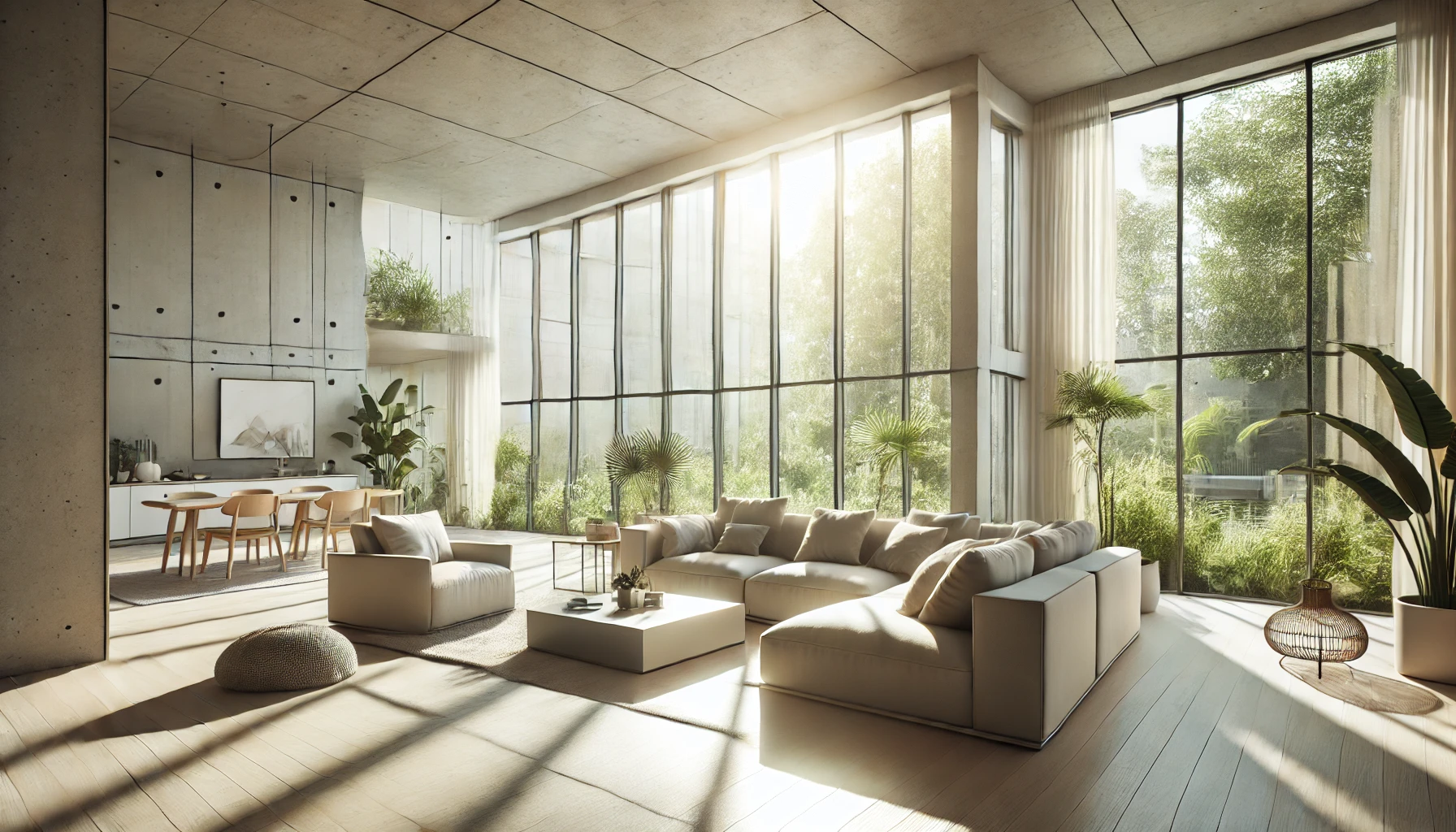
Why Natural Light is Essential for a Healthier Home
Natural light plays a vital role in our overall well-being. Homes with abundant natural light are often associated with better mental health, improved mood, and increased productivity. The sunlight helps regulate our circadian rhythm, which in turn affects our sleep patterns. Additionally, natural light can make any room appear larger, more open, and inviting. This visual appeal creates a more relaxed and comfortable living environment, enhancing the overall quality of life.
From an economic perspective, utilizing natural light can significantly reduce the need for artificial lighting during the day, leading to lower electricity bills. Furthermore, exposure to sunlight increases vitamin D levels, which is beneficial for physical health. It’s clear that incorporating more natural light into home design offers not only aesthetic advantages but also tangible health and financial benefits.
The Environmental Impact of Using Natural Light
Incorporating natural light into your home design is a sustainable practice that reduces your carbon footprint. By minimizing the need for artificial lighting, you consume less energy, which in turn leads to fewer greenhouse gas emissions. This eco-friendly approach to home design is not only good for the environment but also aligns with the growing trend towards sustainable living. Choosing energy-efficient windows and optimizing your home’s layout to capture more sunlight is a responsible way to reduce your environmental impact while creating a more comfortable living space.
How to Increase Natural Light in a Home
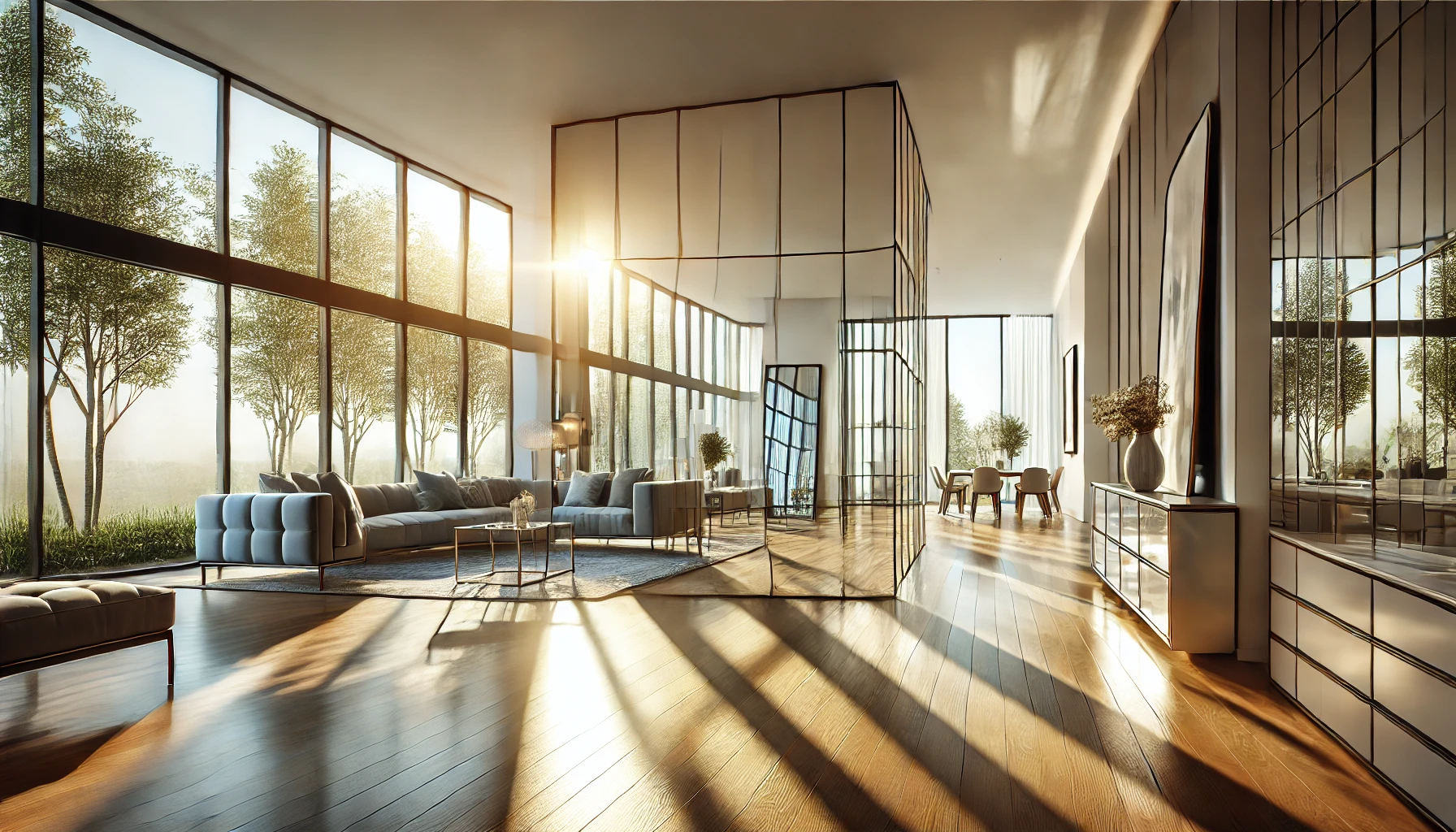
Maximizing Window Placement for Optimal Sunlight
One of the most effective ways to increase natural light in your home is by strategically placing windows where they can capture the most sunlight throughout the day. South-facing windows typically offer the most consistent sunlight, while east-facing windows are great for morning light. If you’re remodeling or building a new home, consider increasing the number and size of your windows to allow more light to flow into your living spaces.
Another way to enhance natural light is by opting for open floor plans. Walls and barriers block the flow of light, while open layouts allow it to spread evenly across multiple rooms. By combining large windows with an open floor plan, you can create a seamless transition of light throughout your home, making it feel more spacious and inviting.
Using Mirrors and Reflective Surfaces
Mirrors and reflective surfaces can work wonders when it comes to amplifying natural light in your home. Placing mirrors opposite windows can help reflect sunlight back into the room, making the space appear brighter and more airy. In addition to mirrors, consider using reflective materials for furniture, decor, and even flooring to bounce light around your space.
Glossy surfaces such as polished wood, glass, or metallic finishes are excellent for maximizing natural light. By strategically positioning these materials, you can make the most of the sunlight that enters your home, creating a brighter and more vibrant atmosphere.
Natural Light Interior Design Ideas
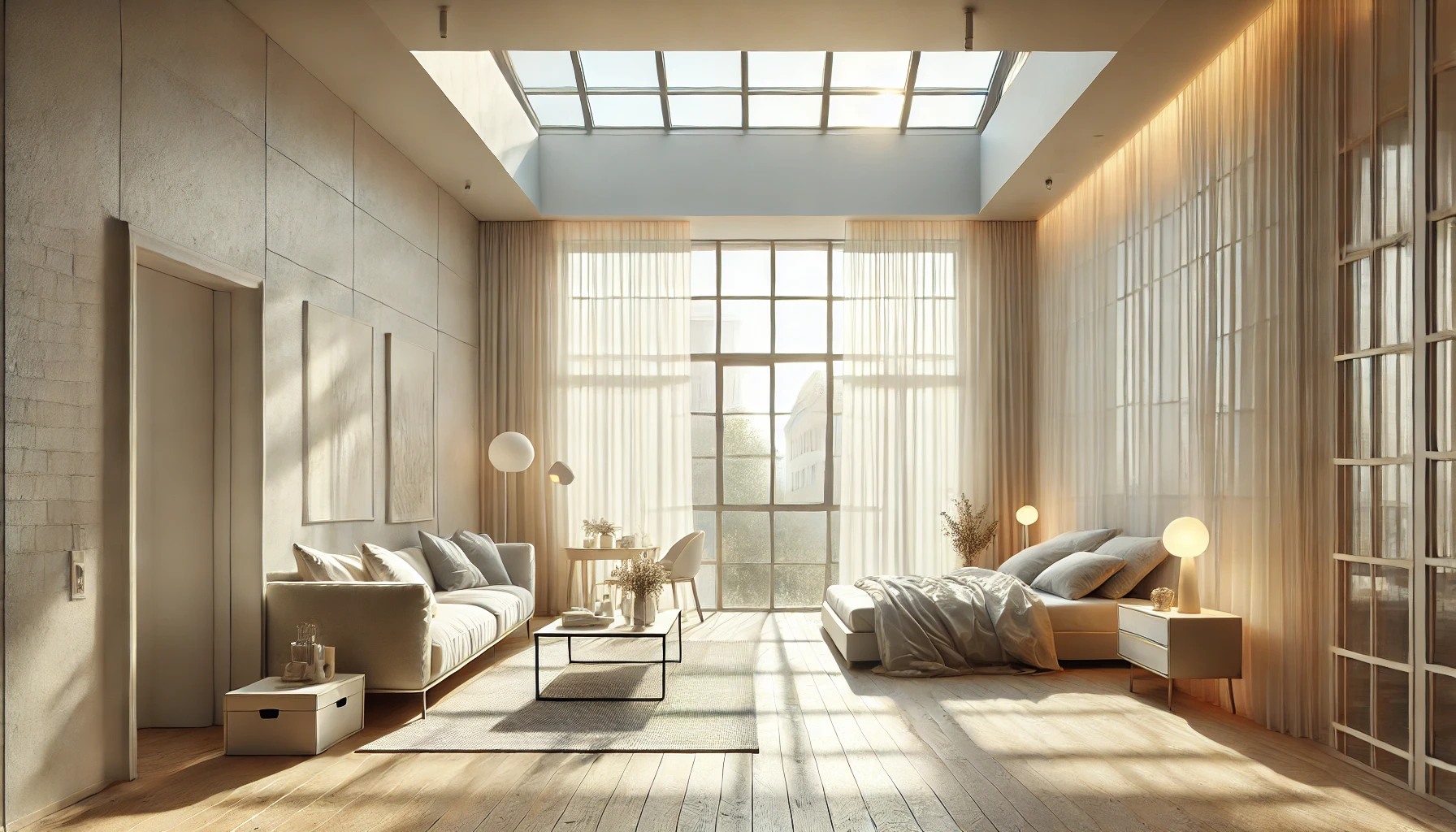
Creating a Bright and Airy Living Room
The living room is often the focal point of the home, and incorporating natural light here can make a significant difference. Floor-to-ceiling windows are a popular choice for maximizing natural light in living rooms, as they allow sunlight to flood the space throughout the day. Pair these windows with light-colored walls and furniture to enhance the effect of the natural light and create a bright, welcoming atmosphere.
If your living room lacks large windows, you can still optimize the available natural light by using lighter paint colors and minimalist furniture. These choices will help reflect sunlight and give the illusion of a more spacious, airy room. Additionally, adding sheer curtains or blinds can soften the light while still allowing it to enter the space.
Designing a Sun-Filled Bedroom Retreat
Your bedroom should be a place of relaxation, and natural light can play a key role in creating a calming atmosphere. Large windows, particularly those facing east, can fill your bedroom with soft morning light, helping you wake up naturally and feel refreshed. Consider installing blackout curtains for the night to ensure a restful sleep while still allowing you to enjoy natural light during the day.
In addition to windows, skylights are a great way to introduce more natural light into your bedroom. These overhead windows allow sunlight to pour in from above, making your room feel more open and serene. Paired with light-colored bedding and decor, a bedroom filled with natural light can be both cozy and rejuvenating.
Best Windows for Natural Light
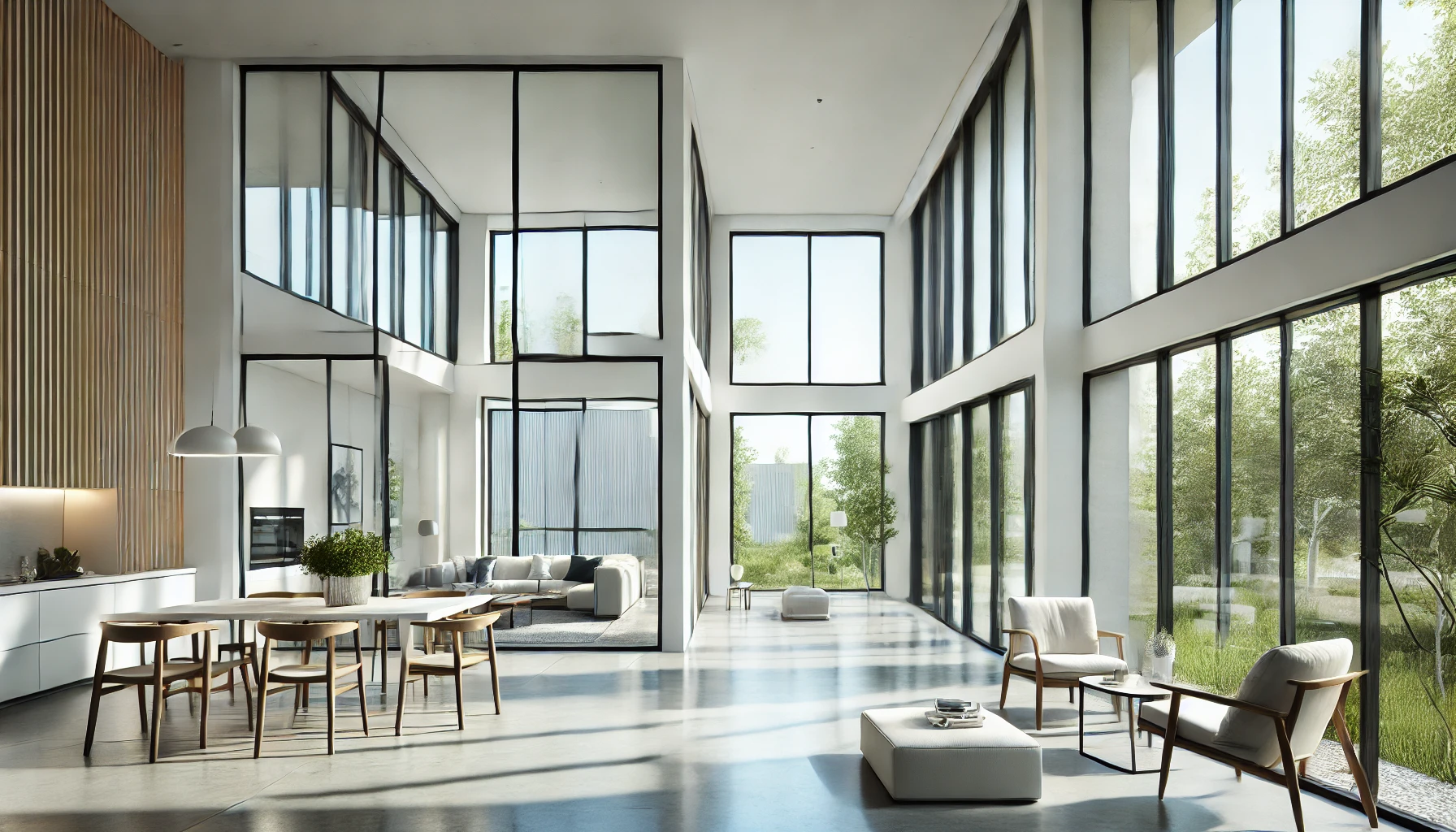
Choosing Energy-Efficient Windows
When it comes to enhancing natural light, not all windows are created equal. Energy-efficient windows are designed to maximize sunlight while minimizing heat loss, making them an excellent choice for homeowners looking to brighten their space without sacrificing comfort. Double or triple-glazed windows, for example, offer excellent insulation while still allowing plenty of light to enter the room.
In addition to energy efficiency, consider windows with low-emissivity (low-E) glass. This type of glass is coated to reflect heat while still letting in natural light, keeping your home cool in the summer and warm in the winter. These windows are a smart investment that will not only increase natural light but also improve the overall energy efficiency of your home.
Casement and Picture Windows for Maximum Sunlight
Casement windows, which open outward, are ideal for maximizing natural light and ventilation. Their design allows for larger panes of glass, providing an unobstructed view of the outdoors and allowing more sunlight to enter your home. These windows are particularly effective in living rooms and bedrooms, where ample light is desired.
Picture windows, on the other hand, are fixed and do not open, but they offer a large, uninterrupted view of the outdoors. These windows are perfect for areas where you want to maximize natural light without the need for ventilation. Both casement and picture windows are excellent choices for increasing sunlight in your home while maintaining a sleek, modern look.
Open Floor Plans for Natural Light
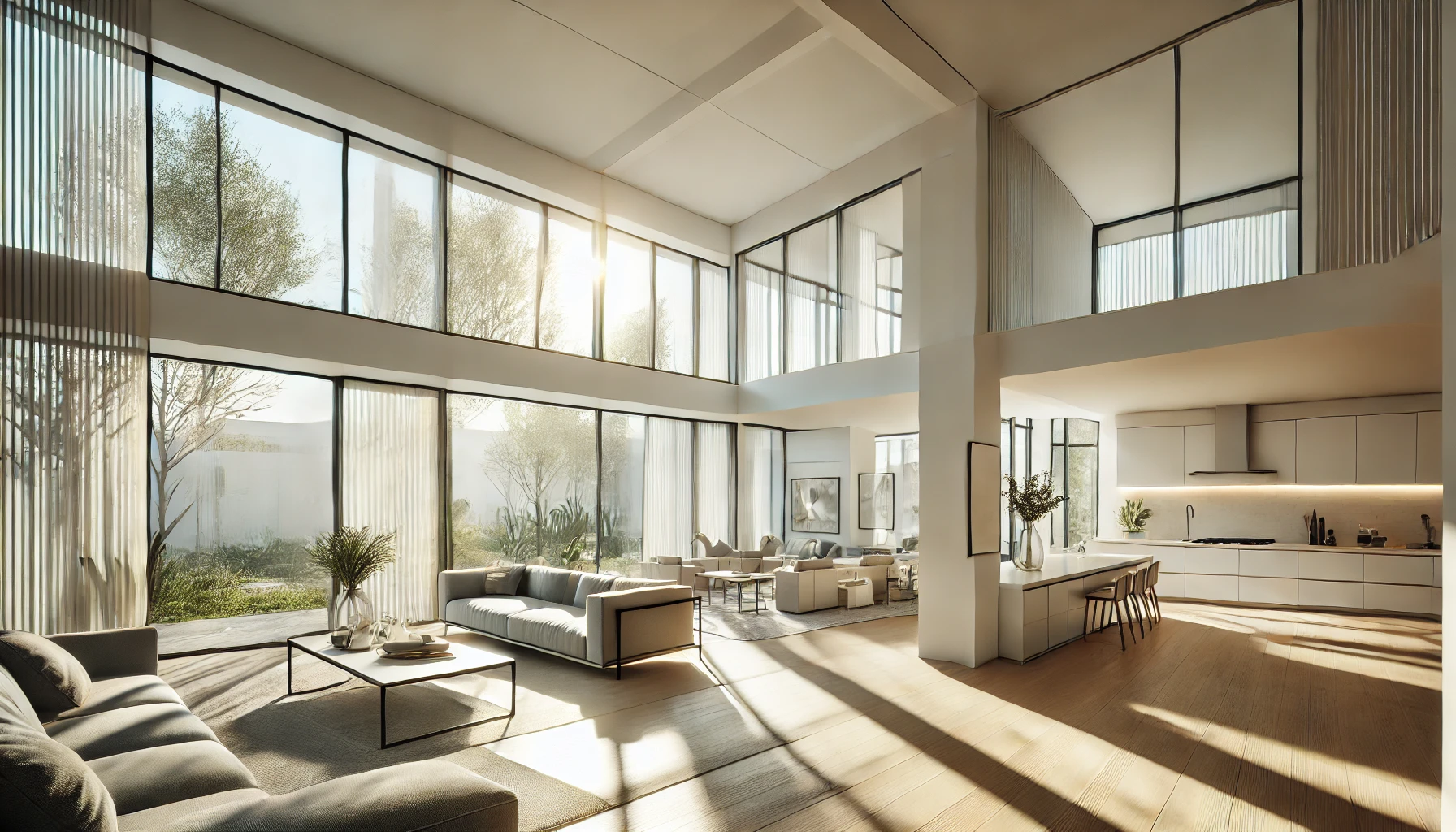
The Benefits of Open Floor Plans in Modern Homes
Open floor plans have become increasingly popular in modern home design, and for good reason. By removing walls and barriers between rooms, you create a more spacious and airy environment that allows natural light to flow freely throughout the home. This design concept is particularly effective in homes with large windows, as the sunlight can reach multiple rooms at once, creating a bright and cohesive living space.
An open floor plan also offers flexibility in how you arrange your furniture and decor, giving you the freedom to optimize the flow of light in your home. Whether you’re designing a new home or renovating an existing one, incorporating an open floor plan can dramatically improve the amount of natural light in your living spaces.
Maximizing Natural Light with Fewer Walls
In homes with traditional layouts, walls often block the flow of natural light, creating dark and closed-off spaces. By reducing the number of walls in your home, you can allow sunlight to spread more evenly throughout the interior. This design approach is particularly effective in areas like the kitchen and living room, where natural light can enhance the overall ambiance and make the space more inviting.
When designing an open floor plan, it’s important to consider the orientation of your windows to ensure that each room receives ample natural light. South-facing windows, for example, provide consistent sunlight throughout the day, while east-facing windows bring in bright morning light. By strategically placing windows and minimizing walls, you can create a home that feels light, airy, and connected.
Natural Light Home Design Trends
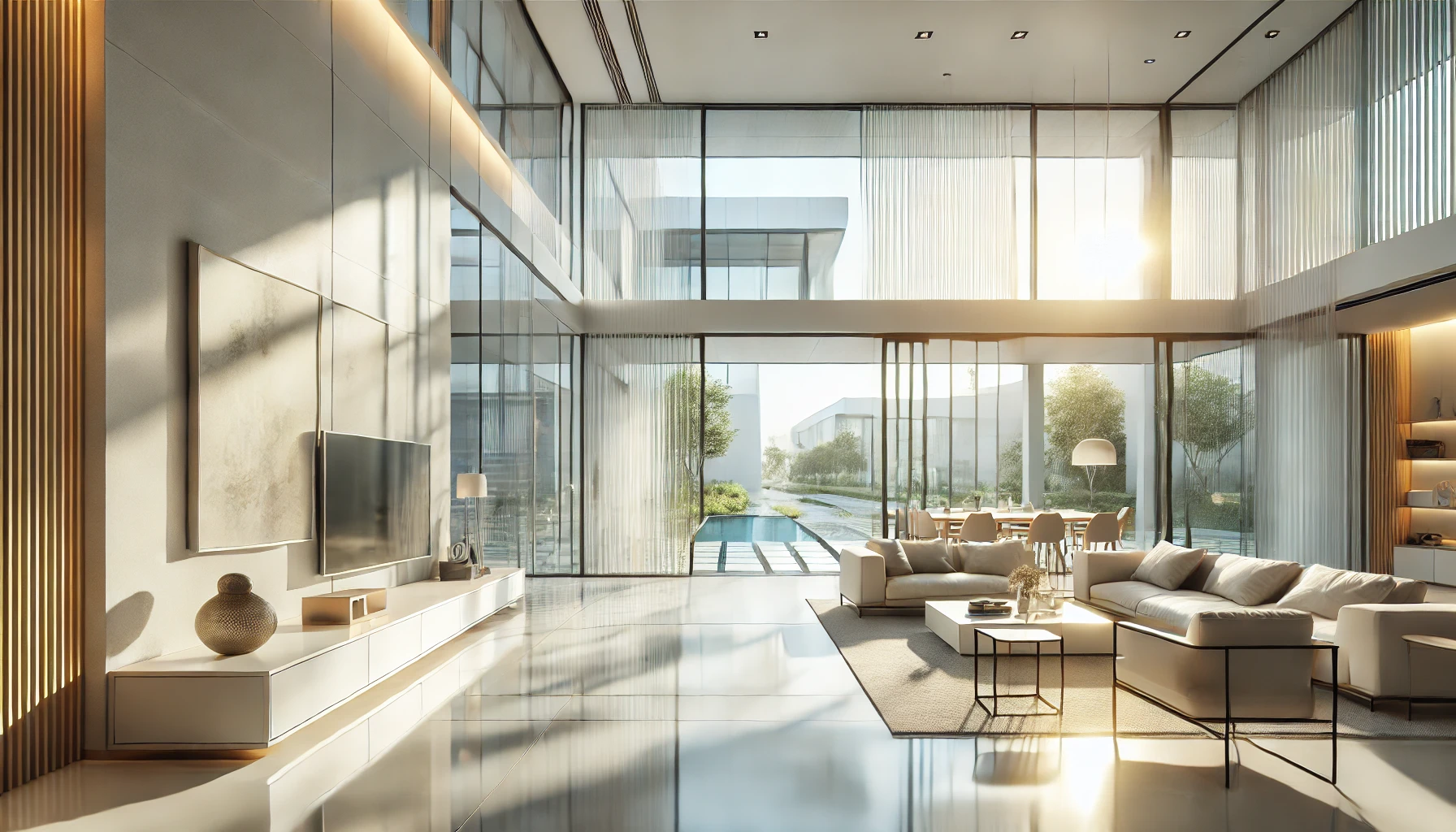
Incorporating Large Windows and Glass Doors
One of the biggest trends in natural light home design is the use of large windows and glass doors to blur the line between indoor and outdoor spaces. Floor-to-ceiling windows, sliding glass doors, and even glass walls are becoming increasingly popular as homeowners seek to maximize natural light and create a seamless connection with the outdoors. This trend not only enhances the amount of sunlight entering the home but also provides stunning views and a greater sense of openness.
Glass doors, particularly those leading to outdoor patios or balconies, are an excellent way to bring natural light into the home while adding a modern, stylish touch. These doors can be left open during the day to allow fresh air and sunlight to flow into the space, creating a bright and airy atmosphere. This trend is perfect for homes with beautiful outdoor surroundings that you want to showcase and enjoy from the comfort of your living room.
The Rise of Minimalist Designs for Maximum Light
Minimalism and natural light go hand in hand. As homeowners increasingly embrace minimalist design principles, they are focusing on clean lines, uncluttered spaces, and neutral color palettes that allow natural light to take center stage. Minimalist interiors are often designed with large windows and open layouts to make the most of the available sunlight, creating a serene and calming environment.
This design trend is particularly popular in urban settings, where space is limited, and maximizing natural light is essential for creating a bright and welcoming home. By eliminating unnecessary furniture and decor, minimalist designs help reflect and amplify natural light, making even the smallest spaces feel more open and airy.
Energy-Efficient Homes with Natural Light
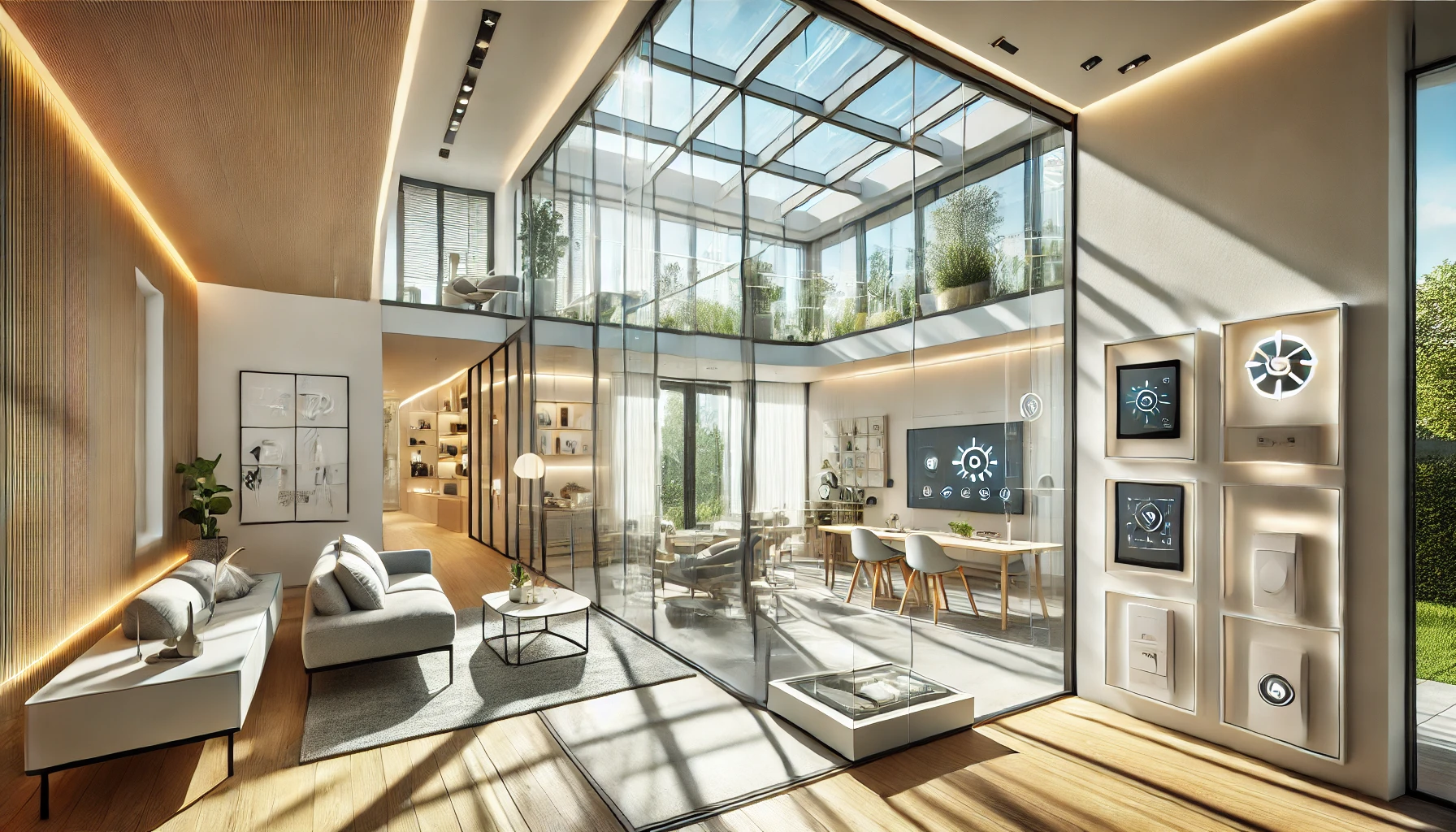
How Natural Light Can Reduce Energy Costs
Natural light is a valuable asset when it comes to energy efficiency. Homes designed to maximize natural light require less artificial lighting during the day, which can significantly reduce electricity bills. Additionally, natural light helps regulate indoor temperatures by providing warmth in the winter and reducing the need for artificial heating. In the summer, strategically placed windows can provide cooling breezes, minimizing the need for air conditioning.
Energy-efficient windows, skylights, and doors can further enhance the benefits of natural light while keeping your home well-insulated. These features help reduce energy consumption and create a more sustainable living environment. By incorporating natural light into your home design, you’re not only improving the aesthetics of your space but also contributing to a more eco-friendly lifestyle.
The Role of Smart Home Technology in Natural Light Optimization
Smart home technology has made it easier than ever to optimize natural light in your home. Automated blinds and curtains can be programmed to open and close at specific times of the day, allowing you to control the amount of sunlight entering your space. Smart lighting systems can also be used to complement natural light, automatically adjusting the brightness of artificial lights based on the level of sunlight in the room.
By integrating smart technology into your home design, you can make the most of natural light while maintaining comfort and energy efficiency. This combination of technology and design ensures that your home remains bright, comfortable, and energy-efficient throughout the day.
Skylights for Maximizing Natural Light
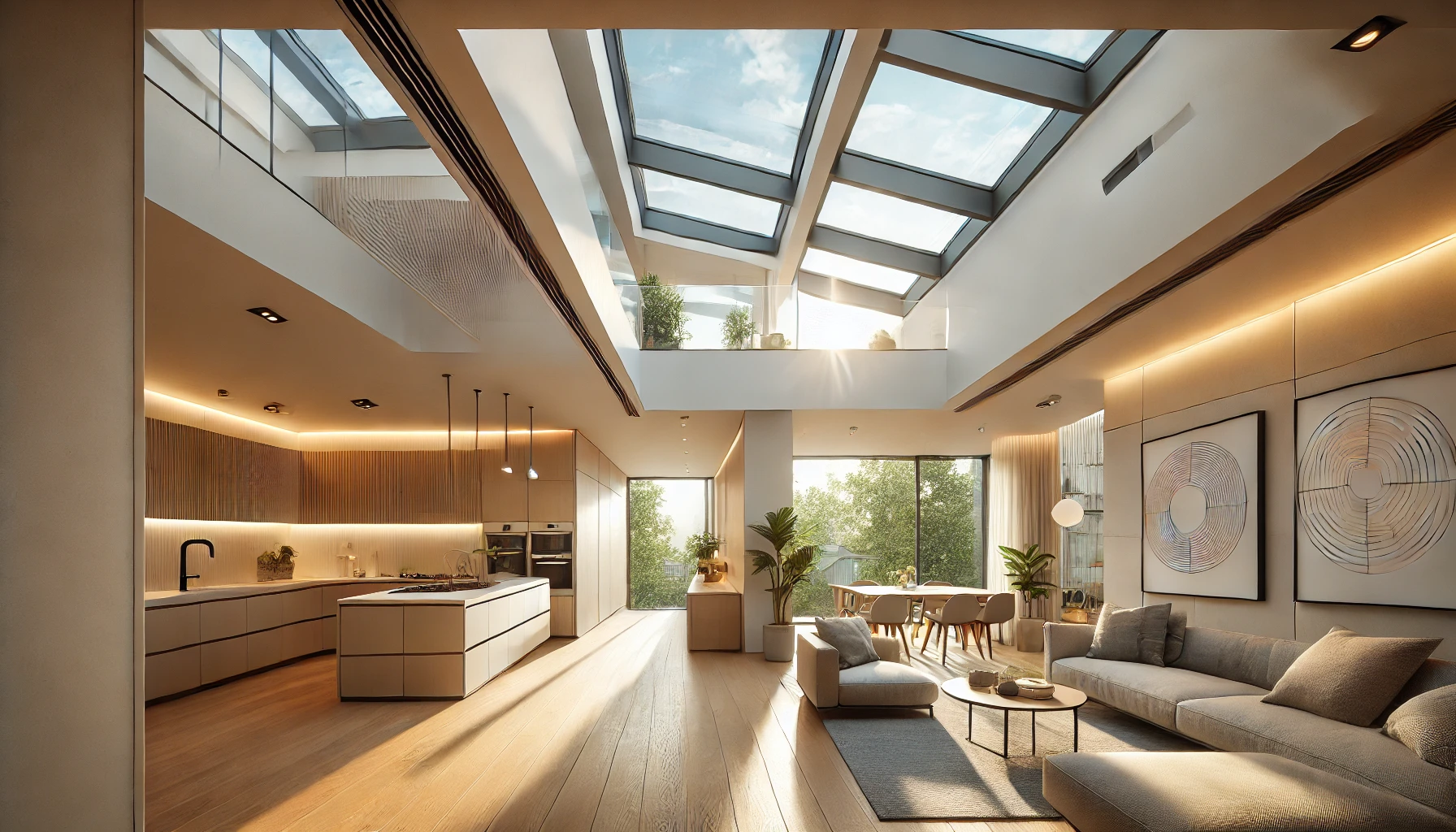
The Benefits of Installing Skylights in Your Home
Skylights are an excellent way to introduce more natural light into your home, especially in areas where windows may not be practical. These overhead windows allow sunlight to pour in from above, making even the darkest rooms feel bright and open. Skylights are particularly effective in kitchens, bathrooms, and hallways, where natural light can enhance the functionality and ambiance of the space.
In addition to their aesthetic benefits, skylights can also improve your home’s energy efficiency. By allowing more natural light into your home, you’ll reduce the need for artificial lighting, which can lead to lower electricity bills. Skylights can also provide ventilation, helping to regulate indoor temperatures and improve air quality.
Choosing the Right Skylights for Your Home
When selecting skylights for your home, it’s important to consider both the size and placement. Larger skylights will allow more light to enter the room, but they may also require additional insulation to prevent heat loss. Smaller skylights, on the other hand, are ideal for smaller spaces or rooms where you want to maintain privacy while still enjoying natural light.
The placement of your skylights is also crucial. North-facing skylights provide consistent, indirect light throughout the day, while south-facing skylights offer more direct sunlight. East-facing skylights bring in bright morning light, while west-facing skylights capture the warm afternoon sun. By strategically placing skylights in your home, you can maximize the amount of natural light while maintaining comfort and energy efficiency.
Natural Light vs Artificial Light in Home Design
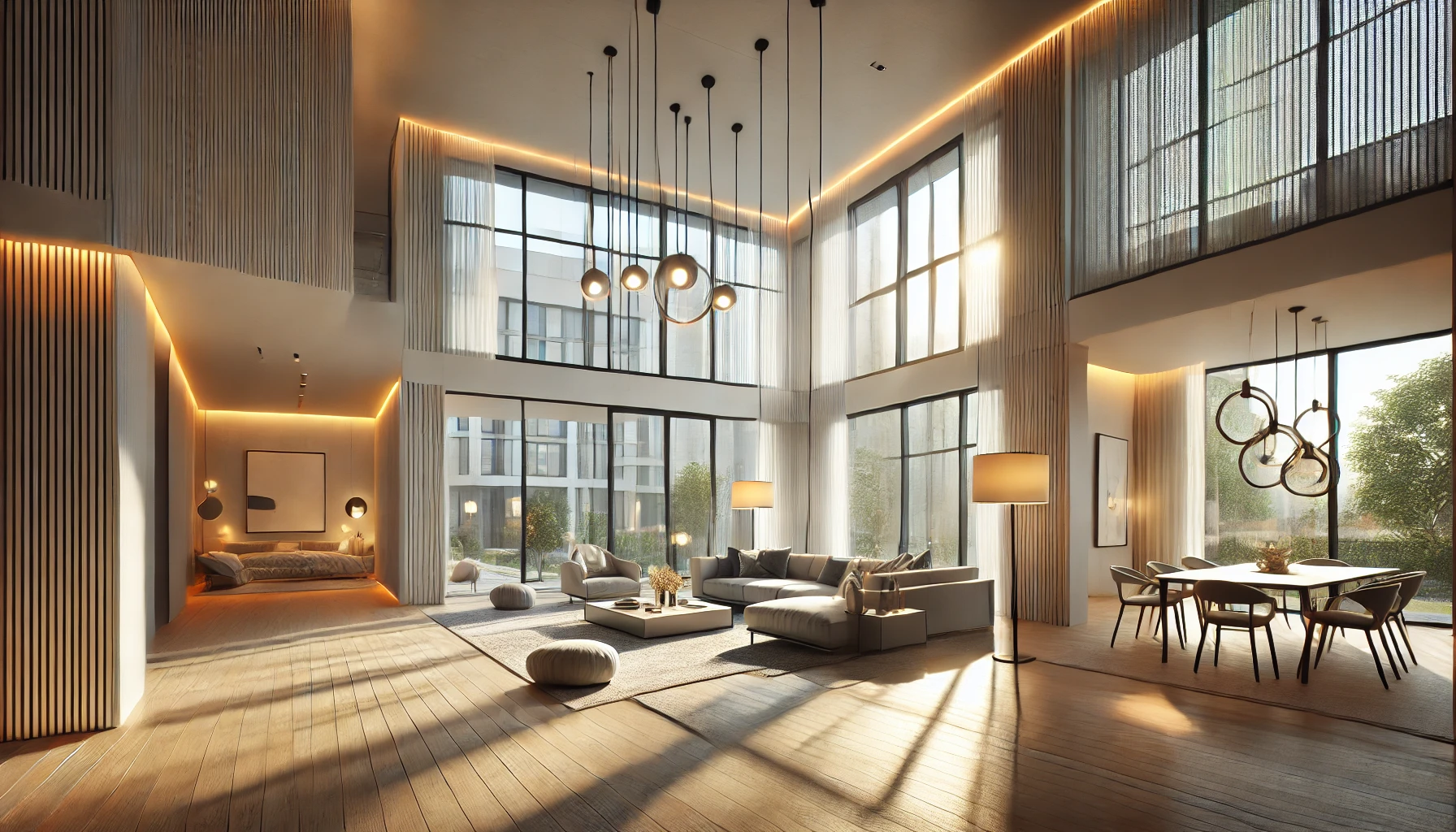
The Advantages of Natural Light Over Artificial Light
Natural light offers numerous advantages over artificial light, both in terms of aesthetics and energy efficiency. Sunlight creates a more inviting and comfortable atmosphere, making rooms feel larger, brighter, and more open. Additionally, natural light is free, which means you’ll save on electricity costs by reducing your reliance on artificial lighting during the day.
In contrast, artificial light can create harsh shadows and distort colors, making spaces feel less inviting. While artificial lighting is necessary at night, it’s important to prioritize natural light during the day to create a more pleasant living environment. By designing your home to maximize natural light, you’ll enjoy a brighter, more energy-efficient space that enhances your overall well-being.
How to Balance Natural and Artificial Light
While natural light should be the primary source of illumination in your home, it’s important to balance it with artificial lighting to ensure comfort and functionality. In areas where natural light is limited, such as basements or north-facing rooms, artificial lighting can help create a brighter and more welcoming atmosphere. Opt for warm, soft lighting that mimics the appearance of natural light to avoid creating a harsh or cold environment.
In rooms with ample natural light, consider using artificial lighting only when necessary. Dimmable lights are an excellent option, as they allow you to adjust the brightness based on the level of natural light in the room. By finding the right balance between natural and artificial light, you can create a home that feels bright, comfortable, and energy-efficient.
Interior Paint Colors to Enhance Natural Light
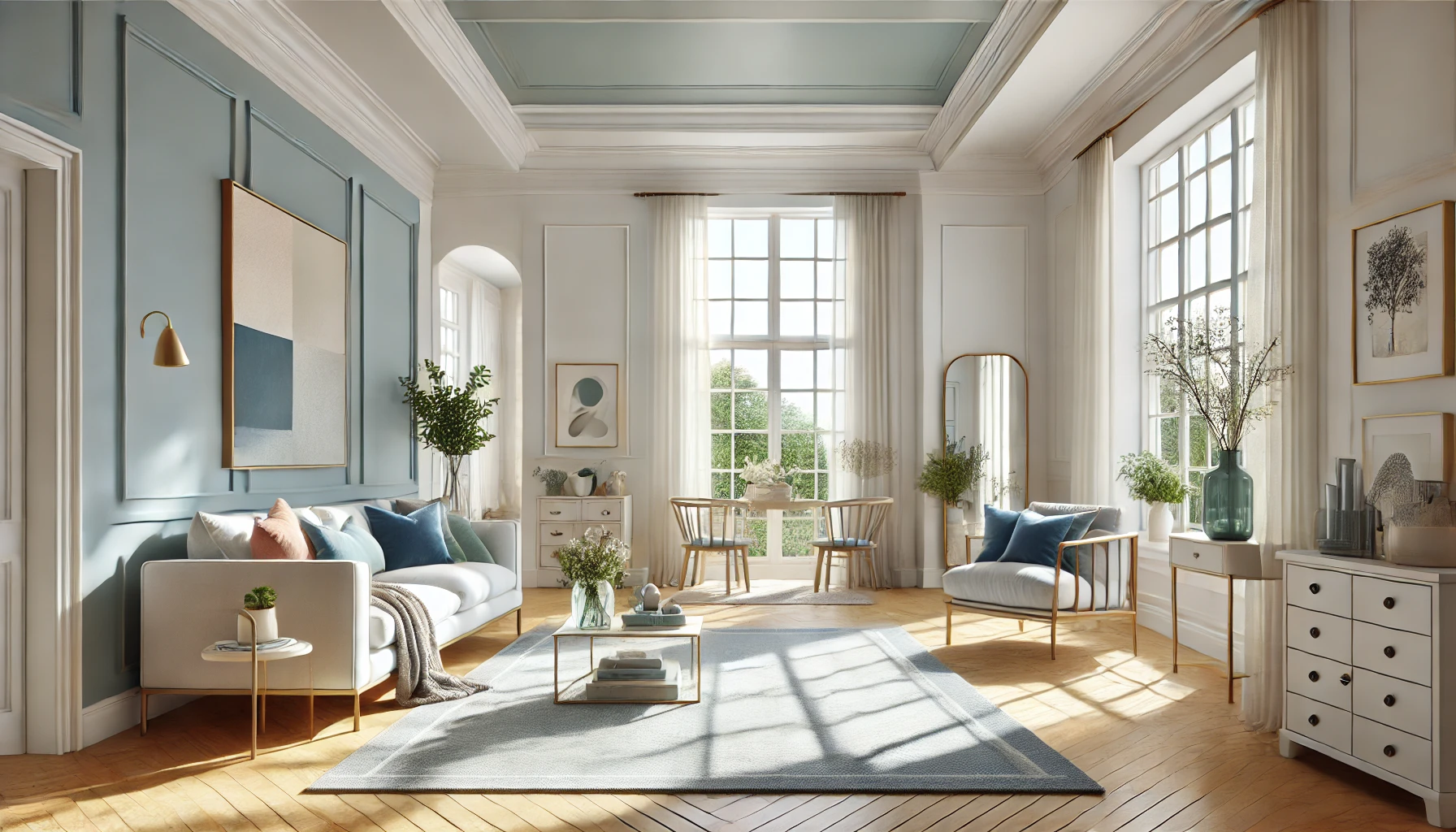
Choosing Light and Neutral Paint Colors
The colors you choose for your interior walls can have a significant impact on how natural light is reflected throughout your home. Light, neutral paint colors are the best choice for enhancing natural light, as they reflect sunlight more effectively than darker shades. Whites, creams, and pale grays are all excellent options for making your home feel brighter and more spacious.
In addition to walls, consider using light-colored furniture, curtains, and decor to further amplify the effects of natural light. By keeping your color palette light and neutral, you’ll create a more open and airy environment that makes the most of the sunlight entering your home.
Using Accent Colors to Complement Natural Light
While light, neutral colors are ideal for reflecting natural light, don’t be afraid to incorporate bold accent colors to add depth and personality to your space. Rich blues, greens, and even deep reds can complement the natural light, creating a dynamic and inviting atmosphere. Just be sure to use these colors sparingly, as too much dark color can absorb light and make the room feel smaller.
Accent walls, rugs, and throw pillows are all great ways to introduce pops of color without overwhelming the space. By combining light, neutral colors with carefully chosen accents, you can create a balanced and harmonious interior that maximizes natural light while adding character and warmth to your home.
Floor-to-Ceiling Windows for Natural Light
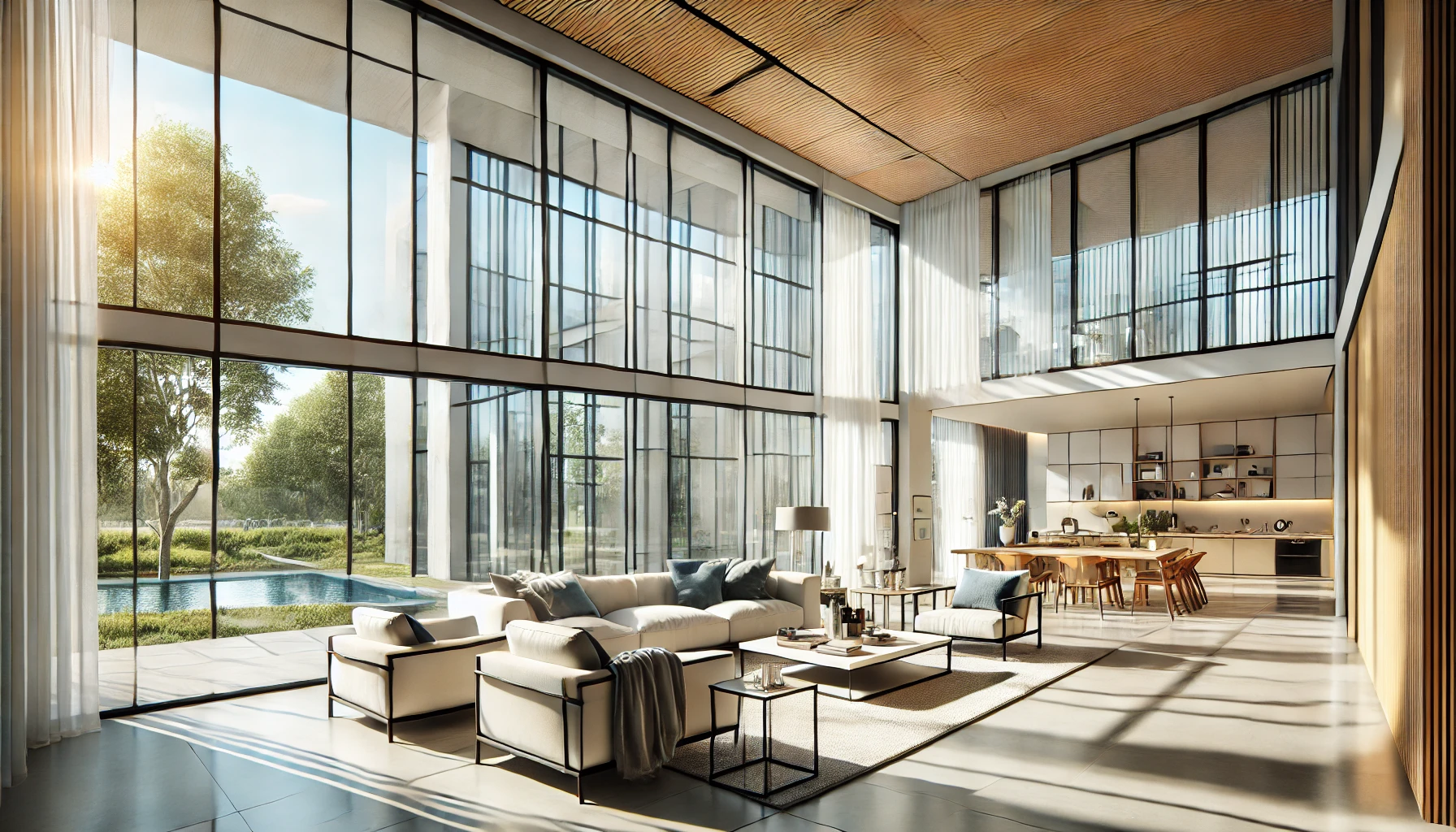
The Aesthetic and Functional Benefits of Floor-to-Ceiling Windows
Floor-to-ceiling windows are a stunning design feature that allows natural light to flood your home while providing breathtaking views of the outdoors. These large windows create a seamless connection between your indoor and outdoor spaces, making your home feel more open and expansive. In addition to their aesthetic appeal, floor-to-ceiling windows also enhance the functionality of your home by bringing in ample sunlight, which can reduce the need for artificial lighting during the day.
These windows are particularly effective in living rooms, dining areas, and bedrooms, where natural light can enhance the overall ambiance. By opting for floor-to-ceiling windows, you’re not only improving the look and feel of your home but also making a smart investment in its energy efficiency and resale value.
How to Incorporate Floor-to-Ceiling Windows in Your Home
If you’re considering adding floor-to-ceiling windows to your home, it’s important to work with a professional home designer to ensure the windows are properly installed and aligned with your overall design vision. These windows work best in areas with open floor plans, as they allow natural light to flow freely throughout the space. Consider placing them in rooms where you spend the most time, such as the living room or kitchen, to make the most of the sunlight.
When choosing floor-to-ceiling windows, be sure to select energy-efficient options with double or triple glazing to prevent heat loss. These windows can also be fitted with motorized blinds or curtains to control the amount of sunlight entering the room, allowing you to enjoy the benefits of natural light while maintaining privacy and comfort.
How to Design a Home with More Natural Light
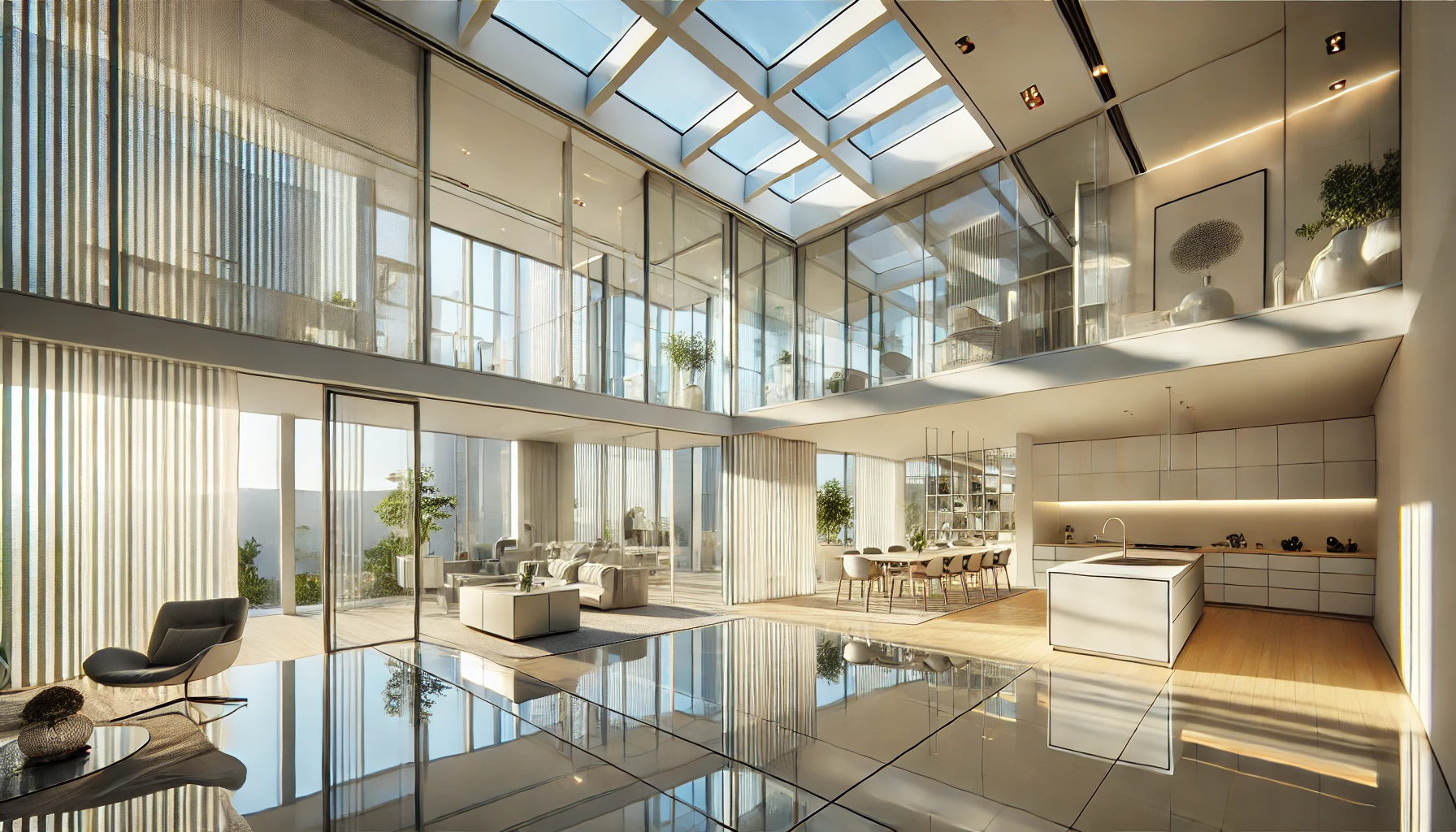
Incorporating Large Windows and Open Spaces
Designing a home with more natural light starts with the layout and window placement. Large windows, especially in open spaces, allow sunlight to flow freely throughout your home. South-facing windows are ideal for maximizing natural light throughout the day, while east-facing windows provide bright morning light. Consider using sliding glass doors or floor-to-ceiling windows to further enhance the amount of sunlight entering your space.
Open spaces are also essential for maximizing natural light. By removing walls and barriers, you create a more open and airy environment where sunlight can reach every corner of your home. Whether you’re building a new home or renovating an existing one, incorporating large windows and open spaces is key to creating a brighter, more inviting living environment.
Utilizing Skylights and Reflective Surfaces
In addition to windows, skylights are an excellent way to bring more natural light into your home. These overhead windows allow sunlight to pour in from above, making even the darkest rooms feel brighter and more open. Skylights are particularly effective in kitchens, bathrooms, and hallways, where natural light can enhance the overall ambiance of the space.
Reflective surfaces such as mirrors, glass, and polished floors can also help amplify the natural light in your home. By strategically placing these materials near windows, you can bounce light around the room and create a brighter, more vibrant atmosphere. This is especially useful in smaller spaces where natural light may be limited.
Natural Light and Home Office Design
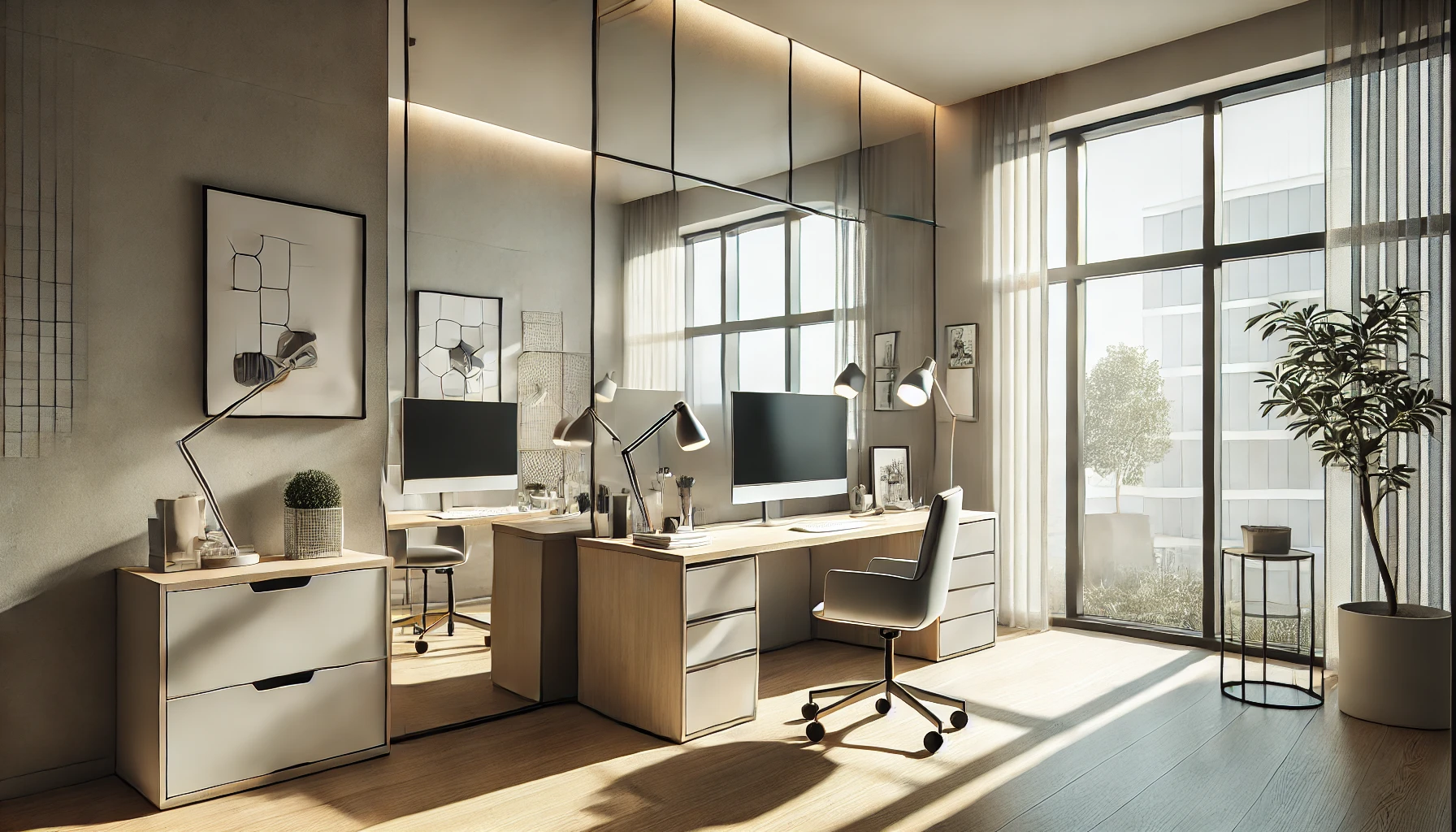
Creating a Productive Home Office with Natural Light
A well-lit home office is essential for productivity, and natural light is one of the best ways to brighten your workspace. Studies have shown that exposure to natural light can improve focus, reduce eye strain, and increase overall productivity. When designing your home office, be sure to place your desk near a window to take advantage of the sunlight.
If your home office lacks large windows, consider adding a skylight or installing mirrors to reflect natural light into the space. Light-colored walls and furniture can also help brighten the room and create a more inviting work environment. By incorporating natural light into your home office design, you’ll create a space that’s not only functional but also conducive to productivity and well-being.
Choosing the Right Lighting for Your Home Office
While natural light should be the primary source of illumination in your home office, it’s important to supplement it with artificial lighting for times when sunlight is limited. Opt for adjustable, dimmable lights that allow you to control the brightness based on the time of day and the amount of natural light available. Task lighting, such as desk lamps, can also help reduce eye strain and improve focus during work.
When selecting lighting for your home office, be sure to choose bulbs that mimic the color temperature of natural light. This will create a more comfortable and inviting atmosphere that enhances your productivity and reduces fatigue. By balancing natural and artificial light, you can create a home office that’s both functional and aesthetically pleasing.
Maximizing Natural Light in Small Spaces
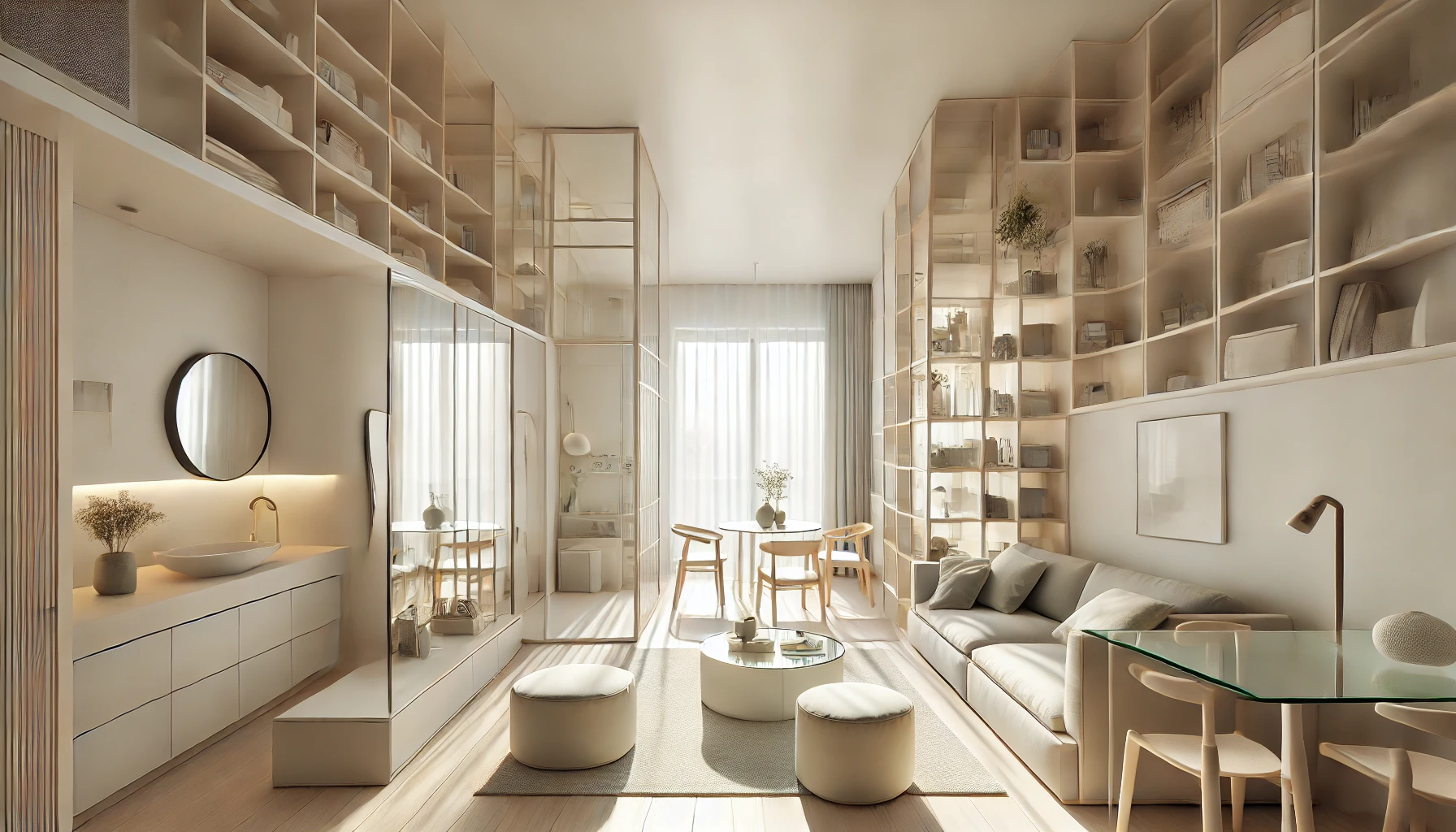
Designing for Small Spaces with Limited Windows
Maximizing natural light in small spaces can be challenging, but with the right design strategies, it’s possible to create a bright and airy environment. Start by choosing light, neutral colors for your walls, furniture, and decor, as these will reflect sunlight and make the space feel larger. Mirrors are also a great way to amplify natural light in small spaces, as they bounce sunlight around the room and create the illusion of more space.
Another way to maximize natural light in small spaces is by opting for open floor plans and minimal furniture. This will allow sunlight to flow freely throughout the room, creating a more open and inviting atmosphere. If you’re working with limited windows, consider adding a skylight or installing larger windows to bring more natural light into the space.
Using Space-Saving Furniture to Enhance Natural Light
In small spaces, it’s important to choose furniture that doesn’t block or absorb natural light. Opt for space-saving furniture such as floating shelves, glass tables, and open bookcases that allow light to pass through. Light-colored furniture is also a great choice, as it reflects sunlight and makes the room feel brighter and more spacious.
By choosing the right furniture and design elements, you can make the most of the natural light in your small space. With these strategies, even the smallest rooms can feel open, airy, and filled with light.
Home Design Tips for Increasing Natural Light
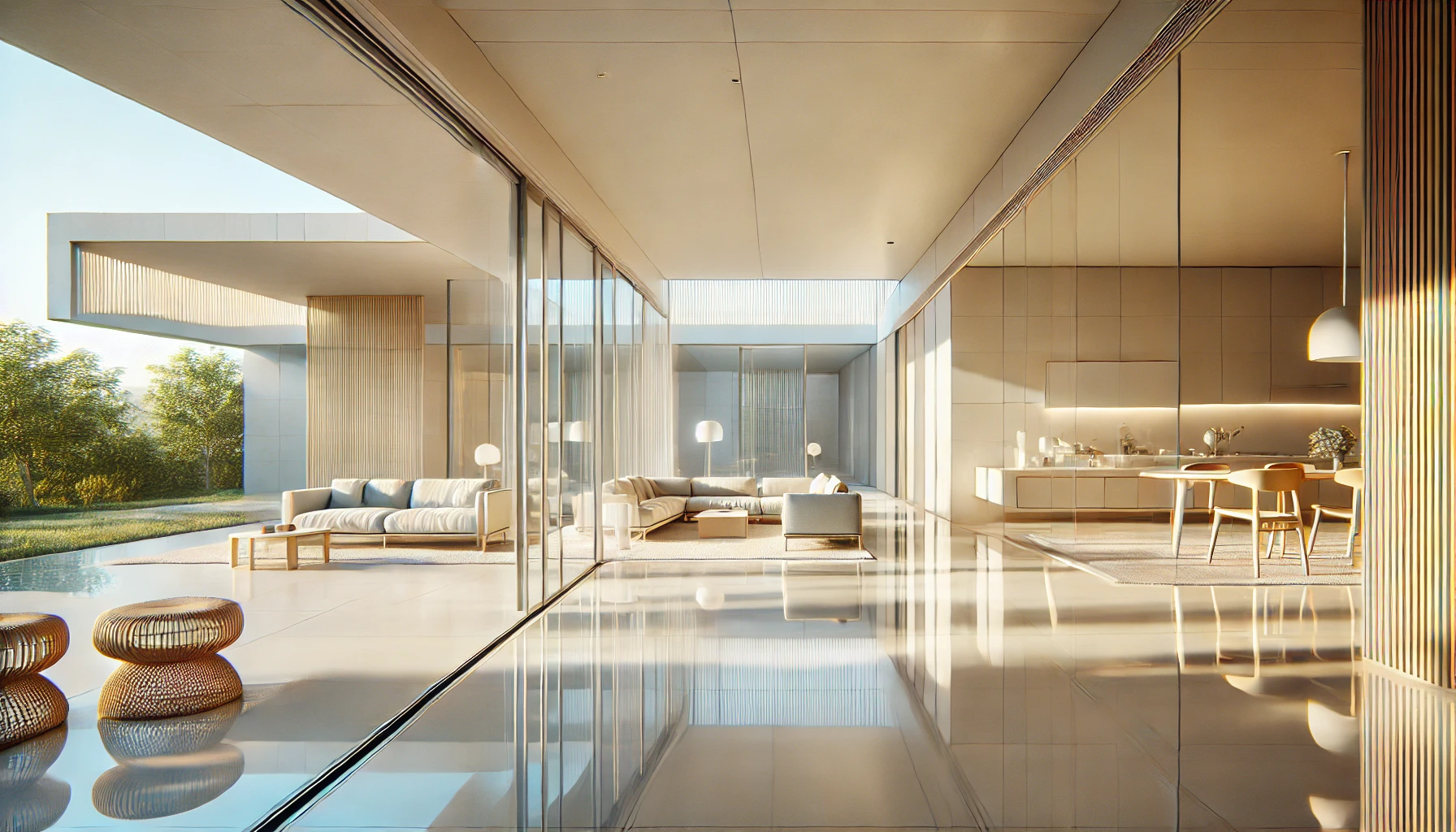
Optimizing Window Placement for Maximum Sunlight
When designing your home, one of the most important factors to consider is window placement. South-facing windows offer the most consistent sunlight throughout the day, while east-facing windows provide bright morning light. By strategically placing windows in key areas of your home, you can maximize the amount of natural light entering your space.
In addition to window placement, consider using larger windows, sliding glass doors, and even glass walls to bring more natural light into your home. These features will not only brighten your space but also create a stronger connection between your indoor and outdoor living areas.
Choosing Light Colors and Reflective Surfaces
The colors and materials you choose for your home’s interior can have a significant impact on how natural light is reflected throughout the space. Light, neutral colors such as white, cream, and pale gray are ideal for reflecting sunlight and making your home feel brighter and more spacious. In addition to walls, consider using light-colored furniture, curtains, and decor to further amplify the natural light in your home.
Reflective surfaces such as mirrors, glass, and polished floors can also help maximize the natural light in your home. By strategically placing these materials near windows, you can bounce light around the room and create a brighter, more vibrant atmosphere.
Brighten Your Home with Natural Light
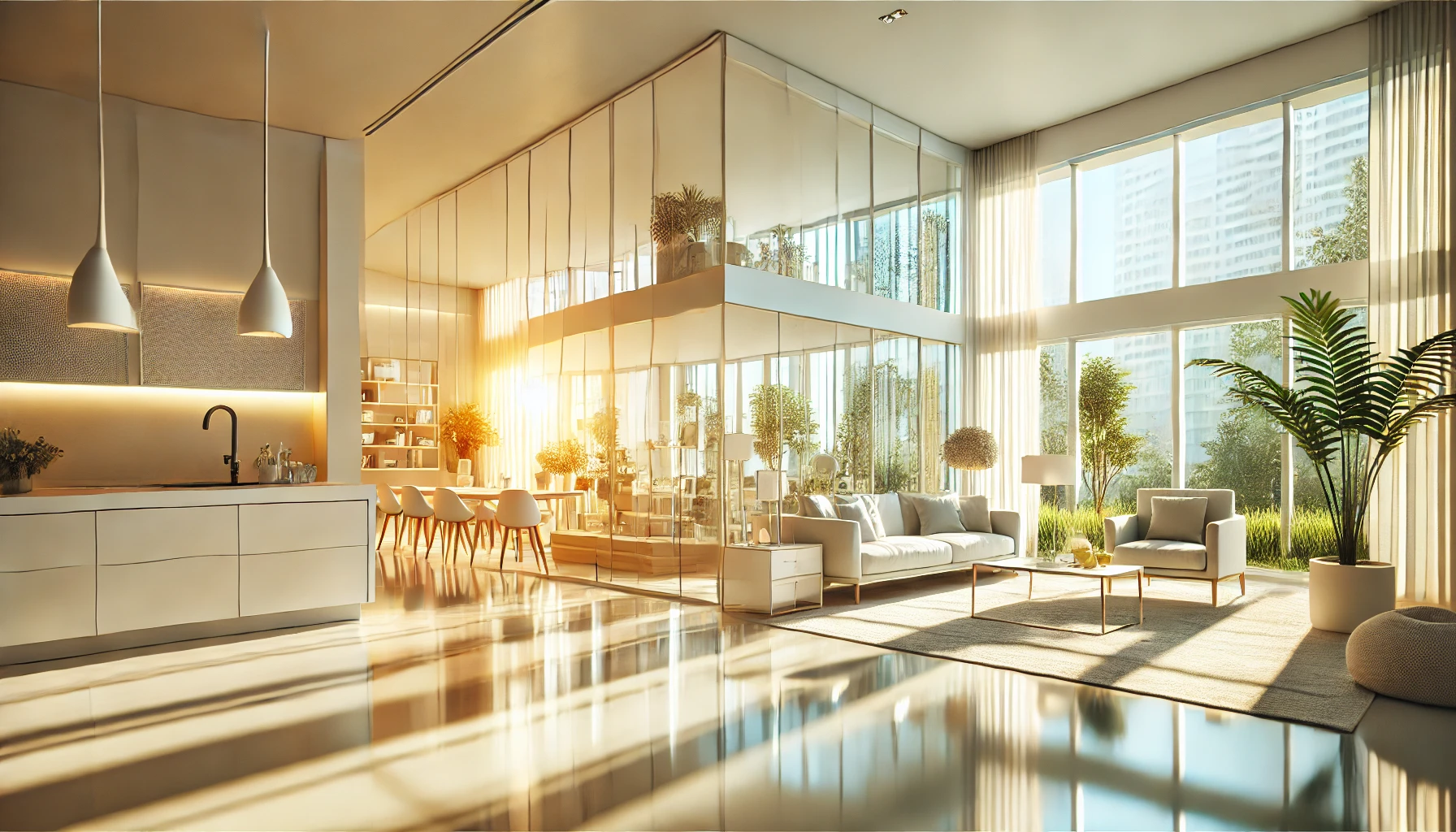
Incorporating natural light into your home design is one of the most effective ways to create a bright, welcoming, and energy-efficient living environment. From strategically placing windows to choosing light-colored interiors, there are countless ways to maximize the natural light in your home. By doing so, you’ll not only enhance the overall aesthetic of your space but also improve your quality of life. Natural light has been proven to boost mood, increase productivity, and reduce energy costs, making it an essential element of any home design.
If you’re ready to transform your home into a bright and inviting space, now is the time to take action. Whether you’re building a new home or renovating your current one, incorporating natural light should be a top priority. By following the tips and strategies outlined in this guide, you can create a home that is not only beautiful but also functional and energy-efficient. So, don’t wait any longer – start designing your dream home filled with natural light today!
Take the First Step Towards a Brighter Home
Thank you for taking the time to learn about the benefits of natural light in home design. If you’re ready to take the next step in creating a brighter, more inviting home, we’re here to help. As experienced home designers, we can work with you to incorporate natural light into your home in a way that reflects your personal style and enhances your living environment. Whether you’re looking to add more windows, install skylights, or redesign your floor plan, we have the expertise and creativity to bring your vision to life.
Don’t wait any longer to brighten your home and improve your quality of life. Contact us today to schedule a consultation and start designing a home that is filled with natural light. Together, we can create a space that is not only beautiful but also energy-efficient and comfortable. Take the first step towards a brighter future – let us help you design the home of your dreams.
F.A.Q: Natural light home design
How does natural light affect home design?
Natural light can greatly influence the overall mood, energy efficiency, and aesthetic of a home. Properly designed spaces with ample natural light can feel more open, inviting, and comfortable.
What are the best ways to bring natural light into dark rooms?
Adding larger windows, skylights, or even light tubes are great ways to introduce more natural light into dark rooms. Additionally, using light-colored walls and reflective surfaces can help brighten a space.
What window treatments allow for the most natural light?
Sheer curtains, blinds, or no window treatments at all can allow the most natural light into a space while still providing some level of privacy.
What are the health benefits of natural light in homes?
Natural light improves mental health by boosting mood and energy levels, helps regulate sleep patterns, and increases Vitamin D production, all contributing to overall wellness.
How does natural light improve energy efficiency in a home?
Natural light reduces the need for artificial lighting during daylight hours, lowering electricity consumption. Well-placed windows can also help regulate indoor temperatures, further enhancing energy efficiency.
What are some cost-effective ways to increase natural light in a home?
Simple solutions include using light paint colors, adding mirrors to reflect light, and opting for sheer window treatments. Larger projects might involve adding new or larger windows and skylights.
Why is natural light important in home offices?
Natural light in a home office increases productivity, improves focus, and reduces eye strain, creating a more comfortable and efficient workspace.
What type of flooring maximizes natural light?
Light-colored, reflective flooring materials like polished wood or light tiles can bounce light throughout a room, making spaces feel brighter and larger.
What home design styles work best with natural light?
Open floor plans, minimalist designs, and homes with modern, large windows tend to maximize the benefits of natural light, creating a bright and airy atmosphere.
How can I reduce glare while maintaining natural light?
Use frosted glass, window films, or light-diffusing shades to soften sunlight and reduce glare without blocking natural light from entering your home.
What architectural features help increase natural light in a home?
Floor-to-ceiling windows, glass doors, skylights, and open floor plans are some architectural elements that maximize natural light throughout the home.
What is the difference between passive solar design and natural light home design?
Passive solar design focuses on capturing and using solar energy for heating and cooling, while natural light home design emphasizes maximizing daylight to improve indoor ambiance and reduce artificial lighting.
How do large windows impact home design and natural light?
Large windows significantly enhance the amount of natural light entering a space, making rooms feel larger and more open, while also offering stunning outdoor views.
What role do colors play in enhancing natural light in a home?
Light and neutral colors reflect more light, making spaces feel brighter. Dark colors, in contrast, absorb light and can make rooms appear smaller and dimmer.
How can natural light increase a home’s resale value?
Homes with abundant natural light are highly sought after by buyers, as they tend to feel more spacious, energy-efficient, and welcoming, often increasing resale value.
 Home Designing Get expert home decor tips and design inspiration at HomeDesigning.blog. Transform your living spaces with trending styles and DIY ideas!
Home Designing Get expert home decor tips and design inspiration at HomeDesigning.blog. Transform your living spaces with trending styles and DIY ideas!
